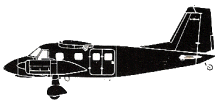Incident Overview

Description
Flight DX203 departed Copenhagen, Denmark on a domestic service to Aalborg. The captain was Pilot Flying. The approach to Aalborg was unstabilized. Due to weather conditions being below minima for approach, flight DX203 made a holding in the neighbourhood of the airport. As the runway visual range (RVR) improved to required minima for landing, flight DX203 commenced an approach, which was performed visually from approximately abeam and north of the AAL VOR and from 3000 ft MSL. The captain intended to perform an “autopilot coupled approach”, but realized that this was impossible taken into consideration the aircraft position in relation to ILS localizer and the glide path. The captain therefore disconnected the autopilot and continued the approach, aiming for the normal approach envelope. This involved selection of slats, various degrees of flap settings, extension of landing gear, and final selection of flap setting with the engine power levers at about idle thrust position. During the final stage of the approach the captain realized that an applied drift correction for the southerly wind was greater than needed, and therefore a turn to the right was initiated. At approximately 400 feet the IAS approached VA50 (Approach Speed at 50 degrees’ flaps), while the aircraft was still about 200 feet high on the glide path. The aircraft landed on the runway to the left of the centre line and on the right main wheel. During the final approach and until landing the required flight deck dialogue was not in accordance with requirements set by the company. During the routine turn around time on ground at Aalborg no discrepancies were noticed and the aircraft departed for Copenhagen as flight DX204. During the maintenance preflight check at Copenhagen damages were found on the right outer flap section and the right wing tip. Causal factors: – The captain did not exercise proper flight deck management during descent and approach. – The captain initiated the final approach visually from a position that resulted in deviation from a normal approach flight profile. – The workload on the captain in his efforts to place the aircraft within the required parametres resulted in a break down of the essential crew coordination, which excluded the flight officer from a structured participation in the flight deck duties. – The captain did not execute a missed approach when he realized that the approach was not stabilized. – The crew composition was not strong enough to prevent this accident.
Primary Cause
Inadequate flight deck management, specifically a failure to properly manage the aircraft’s position relative to ILS and the surrounding airspace, leading to a misjudgment of wind drift and a turn to the right.Inadequate flight deck management, specifically a failure to properly manage the aircraft’s position relative to ILS and the surrounding airspace, leading to a misjudgment of wind drift and a turn to the right.Share on:





